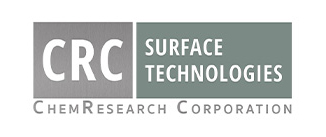
13 Feb How to Prevent Industrial Post-Plate Tarnishing
Electroplating offers many benefits, like enhancing the lifespan and appearance of metal substrates. But some industrial metals are subject to tarnishing after plating, and can become dull and discolored. Here’s how to prevent and remove post-plate tarnishing to ensure the plating effects last.
Why Do Some Metals Tarnish After Plating?
Tarnishing is a chemical reaction that makes some metals lose their lustrous appearance. When they are exposed to certain nonmetal compounds over time—such as air and excessive moisture—the chemical reaction discolors and destroys a thin layer of the metal surface.
Tarnishing doesn’t only happen to jewelry and silverware, it can also affect metals in industrial applications. Metal parts that are frequently (or constantly) exposed to the elements have the highest risk of tarnishing after electroplating. But exposure to extreme temperatures and packaging materials that contain hydrogen sulfide or sulfur dioxide can also speed up the tarnishing process.
Silver plating is most commonly associated with tarnishing, but just about any type of plated metal can be susceptible. Copper, brass, nickel, zinc, and aluminum plating can all become tarnished. Only precious metals like gold and platinum are safe from tarnishing.
Can You Remove Tarnish?
It is possible to remove tarnish from metal, but it is not ideal. You can sometimes remove tarnish simply by hand sanding or polishing the substrate, which can be time-consuming when there is extensive tarnishing or a large surface.
Tarnish can also be removed through abrasive blasting, which uses high-pressure water and glass beads, aluminum oxide, or other blasting media. However, it can be difficult to blast the substrate without causing damage, so it must be performed by a professional.
How to Prevent Post-Plate Tarnishing
It’s much better to prevent tarnishing in the first place than to have to remove it in the future. Fortunately, there are several effective ways to prevent post-plate tarnishing.
Anti-Tarnish Coatings
After surface treatment, an anti-tarnish coating can be applied to prevent oxidation. Chromates, triazoles, lacquers, and clear powder coatings have the ability to slow down the tarnishing process. Anti-tarnish coatings also help improve the solderability and corrosion resistance of the metal part.
Nitrogen Bagging
The process of nitrogen bagging involves placing a post-plated substrate in a bag and filling it with pure nitrogen. This process effectively protects the plated metal by eliminating oxygen that would otherwise contribute to tarnishing.
Mechanical Barriers
Desiccants, which induce dryness, and various types of protective wraps can also be used to protect metal parts from tarnishing. The materials act as a mechanical barrier that reduces the effects of exposure to moisture and oxygen.
Electroplating Services in Phoenix, Arizona
The best way to prevent post-plate tarnishing is to get your metal parts professionally electroplated. The experts at CRC Surface Technologies will take all the steps necessary to minimize and prevent tarnishing.
We offer silver, copper, nickel, and many other types of electroplating services to regional and national machine shops alike. We also offer additional services such as abrasive blasting that can restore damaged metal parts.
Give us a call at 602-253-4175 or email us at rfq@chemresearchco.com to request a quote.
Images used under creative commons license – commercial use (2/13/2023). Image by veronicataboada94 from Pixabay

